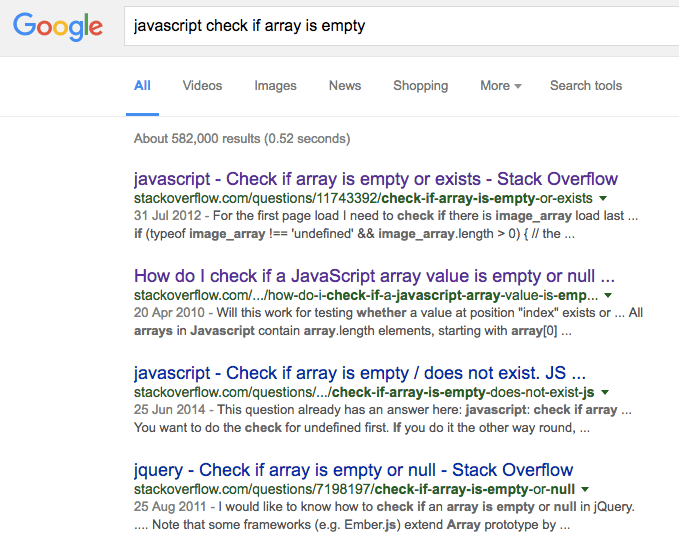There is a high chance that you’ve visited this page, this other page, and probably this one as well. Probably not this one nor this one, but I know for sure that you’ve been on this one.
To be fair, I can only guess. Whereas you can tell for sure, even without clicking or hovering any of these links, which ones you’ve already visited, because my website changes the colour of visited links.
A journey through time
Browsing the Web is mainly two-dimensional: you either scroll (y-index) or click (z-index).
The colour of links provides a third dimension: time.
- purple links are from the past
- blue links are potential candidates for the present or future
Depending on what you’re looking for, the sight of visited links can trigger two different reactions:
- “Ah yes, that’s the website I was looking for! I’ve already been there.”
- “I’ve already tried this webpage, let’s try the next.”
A list of links as a checklist
Link aggregators like Reddit or Hacker News are one of the few websites to still distinguish visited links from “new” ones.

Google search results are usually processed the same way. Let’s say you’re learning JavaScript and want to know how to check if an Array is empty.

Purple links are processed as completed tasks because:
- you probably don’t want to see the same page twice in a row
- you want to resume your checklist where you left if off
The colour distinction provides information about the state of the list.
Purple links? Eww!
But why are visited links so rare? Because designers (like me) are both lazy and picky.
When finalising a mockup (approved by either your ego or your client), you want the coded webpage to actually match that mockup. You wouldn’t want the user’s browsing history to affect your perfectly balanced design now, would you?
If you’re professional enough, you would design the button’s and input’s different states (default, hover, clicked, focused, disabled). But defining the visited state will never cross your mind.
This is one of the first CSS rules any designer writes:
a {
color: $anythingButBlue;
}This affects all links, in any state: hover, active, focus, and visited. It’s like a colour reset. You set it and forget it. You could use the :link pseudo-class but nobody knows about it. Plus, you’d forget to set :visited anyway.
A webpage is a living document: you design for different viewports, different environments, different interface states, different user interactions.
Ignoring the colour of visited links is like caring about browser consistency: believing that every user experience should be strictly identical.
Privacy issue
A few years ago, someone ran an experiment: a website displaying links to the 1000 most visited websites. The website could potentially “steal” your browsing history by computing the colour of each link.
But browsers life Firefox prevent that kind of behaviour now:
Though the color can be changed, the method getComputedStyle will lie and always give back the value of the non-visited color.
(Emphasis mine)
As a result, styling visited links is very limited:

Not all links are equal
Most links do not require a visited colour:
- navigation links (homepage, account, settings) that are repeatedly visited
- interface links that alter the state of the page

How do you decide which links should have a visited colour?
- external links because it provides the user information about a link you’re mentioning (which is why link aggregators do style visited links)
- links to articles (or any page whose content remains identical over time)
To explain, let’s say you’re browsing The Guardian. The homepage is dynamic its content gets updated every few minutes. As a user, you don’t need to know you’ve visited the homepage because:
- you probably already have
- you probably will again
What you would like to know however, is which articles you’ve already read because an article’s content is very unlikely to have changed next time you visit it.
So knowing before clicking on article if you’ve already seen it will define your action depending on your intent:
| Not visited yet | Already visited | |
|---|---|---|
| I want to see it | "New content!" Click! | "That's the article I was looking for!" Click! |
| I don't want to see it | "That doesn't look interesting" Don't click! | "I've seen that already, it's not interesting" Don't click! |
Next time you design a website, think about :visited!
The Web and its users will appreciate it.